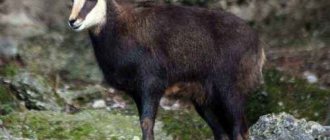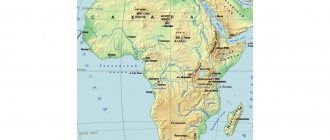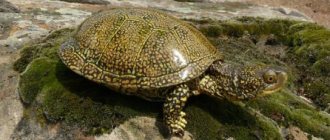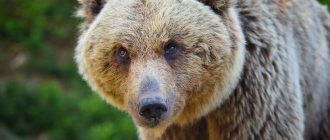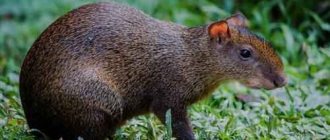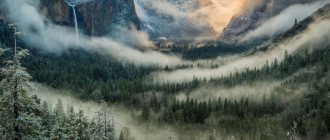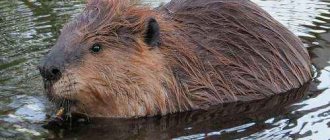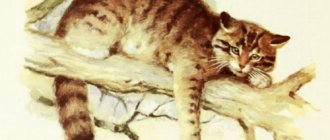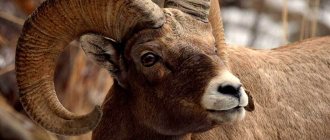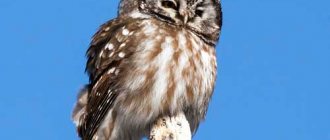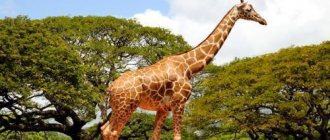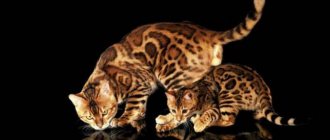The Sverdlovsk region is located in the very center of the Urals. The peculiarities of the geographical location of the region had a significant impact on the species composition of its fauna. Since most of the territory is occupied by boreal forests, there are especially many typical taiga fauna here. In addition, an important role is played by the fact that the Urals is located at the junction of Europe and Asia, which is why the fauna of the region has a mixed European-Asian character. Let's get to know some representatives of the animal world of the Sverdlovsk region better.
Animals of the Middle Urals
Almost the entire territory of the Middle Urals is located in the forest zone. Animals and birds live here, fully adapted to living in coniferous forests: wolverines, weasels, sables, chipmunks, black grouse, wood grouse, hazel grouse. There are no large animals left except elk. But moose have already been taken under protection due to a decrease in their population.
In the upper mountain belt of the Middle Urals you can find wild reindeer; the taiga is home to brown bears, martens, lynxes, squirrels, white hares, moose, moles, eagle owls, woodpeckers, bullfinches, tits, and cuckoos. In the taiga forests of the Middle Urals, amphibians and reptiles are few in number: grass frogs, common vipers, viviparous lizards.
In the forest-steppe regions of the Middle Urals you can find wolves, foxes, stoats, weasels, and hawks. European minks, otters, and water voles live along the banks of rivers and in valleys. In the swamps you can find waterfowl: ducks, wild geese, partridges, and waders.
On the western slope of the Middle Urals there are typical representatives of broad-leaved forests: forest choruses, hedgehogs, badgers, brown hares, orioles, finches, nightingales, goldfinches, siskins, starlings and rooks. Reptiles and amphibians are represented here by toads, newts and non-venomous snakes.
Lynx
A striking representative of the animals of the Middle Urals is the lynx. This large cat does not exceed the size of an average dog, it is no more than 1 meter in length, and its weight does not exceed 17 kg. According to the observations of Siberian and Ural zoologists, the lynx's muzzle looks very interesting: hard rumps that frame the pale muzzle, graceful ears with tassels and an arrogant look.
Alas, only the lynx’s muzzle is considered graceful. The body of this cat is not particularly admirable: the hind legs are too long, the front legs are too short, the tail is small, as if it had been chopped off. In addition, the lynx has very wide paws. This awkward body structure brings great benefits to the lynx: the animal is perfectly adapted not only to everyday, but also to the harsh northern living conditions.
For example, wide paws help this animal to stand perfectly on the snow while chasing its main prey - a hare. The tassels on a lynx's ears are not just decoration, but a kind of antenna-transmitter that helps the cat hear very quiet sounds.
Lynx is a true wild animal of the Urals . In natural conditions it is almost impossible to see this cat. The fact is that lynxes are cautious creatures; they hunt either early in the morning or at the end of the day. Lynxes, like tigers, are solitary hunters. The hunting area is a pre-marked area.
Brown hare and white hare
Both species of long-eared panties are animals of the Middle Urals . Both hares have a brown-gray color in summer, and in winter the white hare abruptly changes its gray coat to a snow-white one. The hare remains gray-brown all year round. Whites, as a rule, are forest dwellers, while hares are inhabitants of steppes and fields.
Brown hare
The hare sleeps during the day and goes out in search of food at night. This long-eared little coward eats tree bark. His favorite “victims” are young aspens, birches, and willows. Whites move easily through deep snow. When a hare makes a jump, like a squirrel, it raises its hind legs far forward.
Brown hares are not as adapted to winter as their relatives, white hare. For example, when the first snow falls on the ground, the hare is unable to get to the winter crops, he has to jump into people’s gardens and vegetable gardens and gnaw cabbage stalks. If there are no stumps, brown hares gallop at full speed to the haystacks. Often these animals harm young apple trees by gnawing off their bark.
White hare
Tourism in the Sverdlovsk region
Numerous and varied attractions of the Sverdlovsk region attract tourists. There are interesting places to suit every taste.
Of the natural attractions, the mountains are very interesting. The highest of them are located in the north of the region, including the main peak of the region - the Konzhakovsky stone. In the central and southern parts the mountains are low, but also beautiful and interesting, and also easily accessible. It is worth noting the mountains Kachkanar, Shunut, Volchikha, Azov Mountain, Merry Mountains, and Sinaya. In the vicinity of Yekaterinburg, the bizarre granite rocks of Chertovo Gorodishche, Petrogrom, and Seven Brothers are very popular.
Thanks to the terrain, there are many ski centers. The largest of them are located on the Belaya, Ezhovaya, and Volchikha mountains. A ski jump complex has been built on Mount Dolgaya in Nizhny Tagil, where world-class competitions are held.
Among the architectural and historical attractions, it is worth noting the Nevyansk Leaning Tower, covered in dark legends. And in the city of Verkhoturye, the Verkhoturye Kremlin was recently rebuilt - the only one in the Urals and considered the smallest in Russia.
The Sverdlovsk region is fertile ground for the development of industrial tourism. The only full-cycle metallurgical plant-museum in Russia (and, apparently, in the world) is located here (in the city of Nizhny Tagil). And in Polevskoye the Severskaya blast furnace has been preserved - the only example of industrial architecture of the 19th century in a good state of preservation in Europe. Also among the museums, the most interesting are the Yeltsin Center, Sverdlovsk Regional Museum of Local Lore, and the House-Museum of P.I. Tchaikovsky in Alapaevsk, museum-reserve of wooden architecture in Nizhnyaya Sinyachikha.
Foreigners who come here generally associate the Sverdlovsk region with the place of the assassination of the last Tsar and with the border of Europe and Asia. Business tourism is widely developed in Yekaterinburg. One of the unique brands of Ekaterinburg, which has no analogues, is the numerous buildings in the constructivist style.
In addition to Yekaterinburg, it is worth visiting Nizhny Tagil, Nevyansk, Irbit, Verkhoturye and others. The longest operating narrow-gauge passenger railway in Russia begins in Alapaevsk. And near the village of Sloboda on Chusovaya there is the only astronomical observatory in the Urals - Kourovskaya.
Water tourists go rafting along the picturesque rivers: Chusovaya, Serga, Iset, Rezh, Kakva, Sosva, Ivdel, Tagil, Ufa, Neiva, Pyshma, Shishim, Serebryanka, Sulem. Of these, the Chusovaya River is the most beautiful. There are numerous rocks along the banks of the rivers. Extreme enthusiasts are attracted to the Revun rapids on Iset.
On the territory of the region there are caves, sinkholes, arches and other forms of karst relief. Among the most popular caves: Smolinskaya, Druzhba, Arakaevskaya.
In the Sverdlovsk region, the Olenyi Ruchi, Chusovaya River, and Bazhovsky Places natural parks, the Pripyshminskie Bors national park, the Denezhkin Kamen and Visimsky nature reserves, as well as the Rezhevskoy natural and mineralogical reserve have been created.
On the website of the Uraloved project you will find detailed descriptions of the sights of the Sverdlovsk region, as well as the most interesting settlements. It is convenient to plan routes using a general map of the attractions of the Urals. On the YouTube channel of the Uraloved project you can watch videos from our trips to places in the Sverdlovsk region
I wish you interesting travels around the Urals! Thank you for your attention!
Sources
Wikipedia Kapustin V.G., Kornev I.N. Geography of the Sverdlovsk region. – Ekaterinburg, 1997. Rundkvist N.A., Zadorina O.V. Sverdlovsk region. Illustrated encyclopedia of local history
Pavel Raspopov
UraloVed.ru
- 10 interesting facts about the Ural Mountains
- 5 largest lakes of the Sverdlovsk region in satellite images
- Records of the Sverdlovsk region
- 5 interesting finds in Yekaterinburg
- Perm region: features, geography, history and attractions
Support Uraloved
Amphibians
Siberian salamander
Crested newt
Common spadefoot
Siberian frog
Reptiles and amphibians
The fauna of reptiles is represented by six species, of which three species are from the suborder Lizards: brittle spindle, viviparous lizard, quick lizard; and three species from the suborder Snakes: the common viper, the common copperhead, and the common snake. Brittle spiny grass and common copperhead are included in the Red Book of the Sverdlovsk Region in the “Rare” category.
The common snake is easily distinguishable from other snakes by its “yellow ears” - pronounced spots on the head.
The amphibian fauna includes nine species, of which three species are from the order Caudate amphibians: crested newt, common newt, Siberian salamander; and six species from the order Tailless: common toad, lake frog, sharp-faced frog, Siberian frog, grass frog, common spadefoot. The Red Data Book of the Sverdlovsk Region includes the Siberian salamander in the “Uncertain status” category, the crested newt in the “Decreasing in numbers” category, the common spadefoot and the Siberian frog in the “Rare” category.
This is interesting: Birds of central Russia - list, characteristics and photos
Birds
The avifauna of the Sverdlovsk region includes 228 species of birds. In quantitative terms, dendrophiles predominate - a group of arboreal and shrubby birds, confined to forests of various types and bushes. The most numerous species are the following: white-browed finch, brown-headed chickadee, wood grouse, common redstart, song thrush, robin, chaffinch, garden warbler, wood pipit, green warbler, willow warbler, chiffchaff, common quail, gray warbler, black grouse, lentil ordinary.
The composition of the nesting avifauna, in quantitative terms, is also dominated by birds associated with trees and shrubs: northern warbler, woodcock, hooded crow, spotted thrush, redwood woodpecker, spotted woodpecker, three-toed woodpecker, field lark, wood accentor, common crossbill, spotted pipit , yellow-headed kinglet, corncrake, deaf cuckoo, common cuckoo, barn swallow, Muscovy, gray flycatcher, common bunting, bunting, green mockingbird, common nuthatch, fieldfare, hazel grouse, common cricket, great tit, long-tailed tit, garden warbler, slav ka - Accentor, common bullfinch, mint, stonechat, lapwing, siskin; The following species are also numerous, confined to aquatic and semi-aquatic biotopes: snipe, badger warbler, mallard, carrier, river cricket, white wagtail, mountain wagtail, and black duck.
The common kingfisher stops during migration on the Pyshma River, where it hunts for fish from the air.
Rare are: shorebird, golden eagle, field sparrow, little funnel, jackdaw, ruffed goldeneye, common goldeneye, white-backed woodpecker, common crane, black kite, white-winged tern, common tern, merganser, marsh harrier, little flycatcher, tawny owl, sparrowhawk, wigeon, short-eared owl, jay, goshawk, grasshopper, yellow wagtail, gray duck, gray heron, tufted duck, pintail.
34 species of birds of prey have been recorded in the region, including 23 species of diurnal predators: saker falcon, golden eagle, merlin, rough-legged buzzard, falcon, black kite, gyrfalcon, marsh harrier, meadow harrier, field harrier, steppe harrier, imperial eagle, white-tailed eagle, common buzzard, sparrowhawk, greater spotted eagle, common kestrel, peregrine falcon, osprey, goshawk, hobby hobby, black vulture; and 11 nocturnal predators: great gray owl, gray owl, Ural owl, white owl, short-eared owl, long-eared owl, hawk owl, scops owl, short-footed owl, sparrow owl, eagle owl.
The following species of birds are included in the Red Book of the Sverdlovsk Region: bittern, merlin, gray woodpecker, black-throated accentor, common kingfisher, falcon, curlew, tundra partridge, whooper swan, mute swan, meadow harrier, lutok, great gray owl, gray owl , dipper, common buzzard, hawk owl, scops owl, sparrow owl, yellow-fronted wagtail, common scoter, crystal.
Reptiles
The region's Red Book contains information about endangered animals, including 2 species of rare reptiles.
Attention! When meeting with snakes, you need to remember that they are the masters of nature, man is a guest. Reptiles don't attack without reason. There is no need to chase them, otherwise they will be forced to defend themselves. It is better to wear high shoes or boots for a walk to avoid consequences.
Legless lizards or brittle spindles are absolutely harmless creatures that resemble snakes up to 50 cm long. They got their name from the ability to leave a tail if danger threatens. They are active at night, live up to 12 years, captivity increases life expectancy to 35 years.
Spindle
Copperheads are considered rare species of snakes that live on the land of Sverdlovsk. Reptiles have been little studied by science. They feed on young lizards, hunt mice and insects.
copperhead
Copperheads are not poisonous, but fear of reptiles forces people to mercilessly kill them, reducing the population of rare reptiles.
Fish
There are 48 species of bony fish found in numerous rivers and lakes of the Sverdlovsk region.
Asp
Fish of the carp family. It grows in length up to 120 cm. The weight of the most well-fed individuals can reach up to 12 kg. It is not a commercial species, but is popular among amateur fishermen.
Taimen
Fish of the salmon family. It can grow up to 2 m in length and weigh about 80 kg. This species is listed in the Red Book of Russia and some other regions of the country.
Shchipovka
Small fish of the loach family. The body length usually does not exceed 10 cm. It is rarely consumed as food, mainly used as bait when catching large fish. Also, due to its miniature size, it is often kept in aquariums.
Amphibians
There are 9 species of amphibians in the Sverdlovsk region. Among them are 3 newts, 4 frogs, 1 toad and 1 spadefoot.
Common newt
Photo: H. Krisp/Wikimedia Commons
Small amphibian, up to 11 cm in length. It spends most of its life in water, where it feeds on insect larvae, crustaceans and mollusks. On land it hunts beetles and caterpillars.
Common toad
The largest toad in Europe. Lives in forests, parks and fields. Hunts terrestrial invertebrates by grabbing them with its sticky tongue. It walks along the ground and jumps only in exceptional cases, for example, when it is in danger.
sharp-faced frog
A small frog, no more than 7 cm long. It lives in forests, swamps and meadows, and is often found in parks and vegetable gardens. Spends most of his time on the ground. Feeds on various invertebrates.
Mammals
The territory of the Sverdlovsk region is home to 66 species of mammals, representing 6 orders: rodents, carnivores, chiropterans, artiodactyls, lagomorphs and insectivores.
Siberian chipmunk
A small rodent of the squirrel family. Distributed in the taiga zone, in coniferous and mixed forests. Prefers to live alone. It feeds mainly on tree seeds, herbaceous plants, berries, mushrooms and lichens, and less often on insects and mollusks. From the end of summer it begins to store food for the winter, and at the end of October it goes into hibernation.
Raccoon dog
A predatory animal of the canine family. It is the size of a small dog with a long body and short legs. Its color is similar to that of a striped raccoon. It is distinguished by its unpretentiousness both in the choice of housing and in food. It can climb into the holes of other animals or dig its own, sometimes it settles in niches among the roots of trees or sleeps without any shelter at all.
Common lynx
A large representative of the cat family. Grows up to 130 cm in length and 70 cm in height. Her entire body is covered with thick, soft fur, her ears are decorated with long tassels. Usually lives in dense coniferous forests, can climb trees and swim. Hunts fur-bearing animals, birds, small rodents, and occasionally small ungulates.
Two-tone leather
Photo: Mnolf/Wikimedia Commons
The bat is only 6.5 cm long, with a wingspan of up to 33 cm. The body is covered with thick fur, brownish on the back and light gray on the belly. Kozhan hunts insects in the dark using ultrasound. Can migrate over long distances, up to 900 km. During the winter it hibernates.
European roe deer
An elegant deer that grows up to 126 cm in length and up to 81 cm in height. All males have horns; females are extremely rare. The roe deer lives in mixed and deciduous forests and in the forest-steppe zone. It feeds on herbaceous plants, berries, mushrooms and lichens.
Brown hare
A relatively large animal with a massive body, long ears and a wedge-shaped tail reaching 14 cm. It usually lives in open spaces in the forest-steppe zone, but is also found in open forests of deciduous tracts. While running in a straight line, it can reach speeds of up to 60 km/h and can swim. It feeds on plants, shoots of trees and shrubs.
Common hedgehog
An insectivorous animal that grows up to 30 cm. Most of its body is covered with needles, and its belly and head are covered with coarse hair. The hedgehog is active in the dark, but during the day it sits in a nest or other shelter. He runs very fast and can also swim and jump. The basis of its diet is insects and their larvae, sometimes mice. From plant foods, he prefers fruits and berries.
